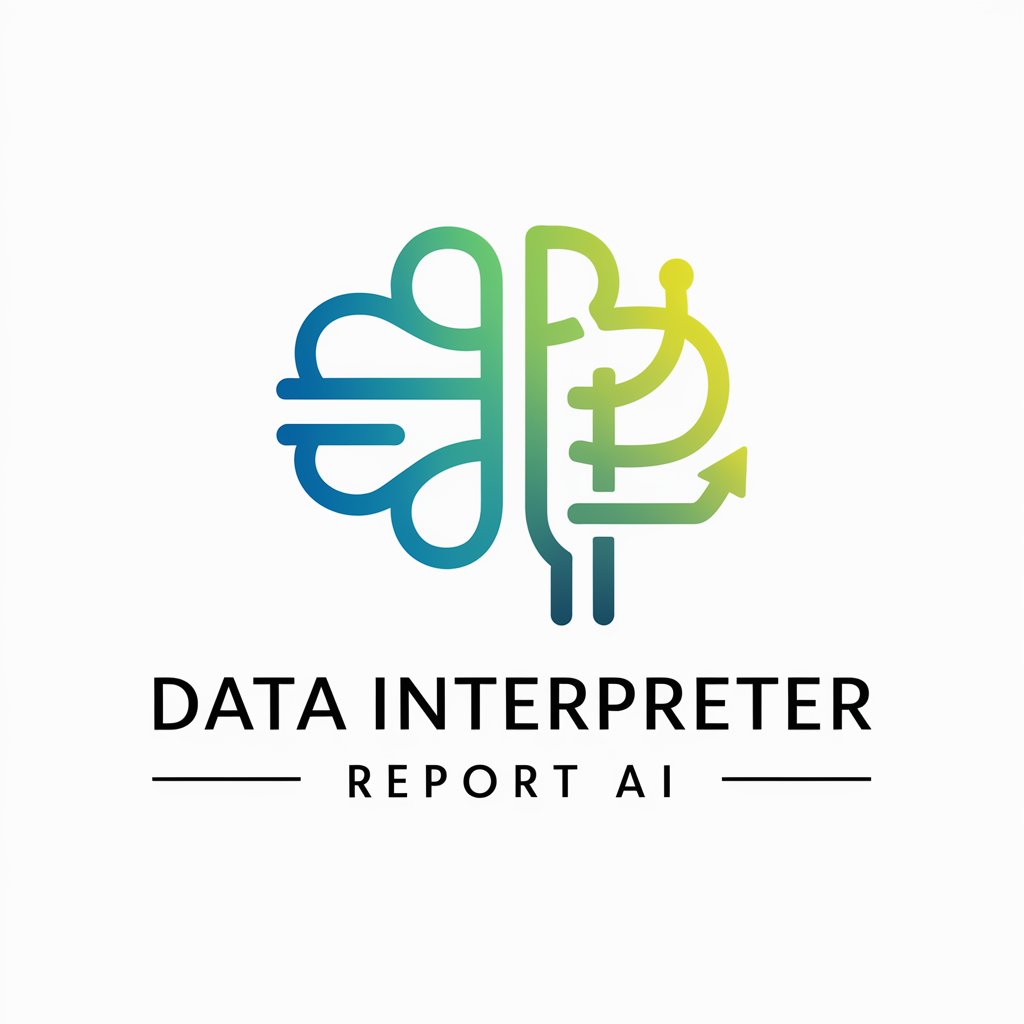Data Interpreter - AI-powered Data Analysis

Welcome to your advanced data analysis companion!
Unlock Insights with AI-Powered Analysis
Analyze this dataset for trends in
Generate a report on the impact of
Perform a statistical analysis on
Visualize the data to highlight
Get Embed Code
Introduction to Data Interpreter
Data Interpreter is a specialized artificial intelligence designed to interact directly with various forms of uploaded data, embodying the data itself to provide insightful and detailed responses. Unlike standard AI models, Data Interpreter is tailored to offer a unique, seamless interaction between users and their data. Whether the data comes in the form of documents, images, or datasets, this AI facilitates a direct conversation with the data, interpreting and translating it into comprehensible insights. For example, when provided with a spreadsheet of sales figures, Data Interpreter can analyze trends, highlight anomalies, and predict future sales patterns, effectively speaking as if it is the dataset itself. This capability extends to processing and analyzing images, text documents, and complex datasets, making it an invaluable tool for data-driven decision-making. Powered by ChatGPT-4o。

Main Functions of Data Interpreter
Data Analysis and Interpretation
Example
Analyzing a dataset of customer feedback to identify key themes, sentiment, and areas for improvement.
Scenario
A business uploads customer feedback data. Data Interpreter processes this information to provide a detailed analysis, including sentiment analysis, theme categorization, and actionable insights, aiding the business in enhancing customer satisfaction.
Trend Identification and Forecasting
Example
Identifying sales trends from historical data and forecasting future sales.
Scenario
A retail company uploads monthly sales data. Data Interpreter examines the dataset to identify seasonal trends, growth patterns, and forecasts future sales, assisting in inventory and marketing planning.
Data Compilation and Report Generation
Example
Compiling data from multiple sources into a cohesive report.
Scenario
An academic researcher uploads various datasets related to climate change. Data Interpreter merges these datasets, analyzes the combined data for trends and patterns, and generates a comprehensive report on climate change effects over the last decade.
Image Data Analysis
Example
Analyzing satellite images to assess changes in land use over time.
Scenario
An environmental agency uploads satellite images captured over different years. Data Interpreter analyzes these images to detect changes in land use, deforestation rates, and urban expansion, providing detailed reports on environmental impact.
Ideal Users of Data Interpreter Services
Data Analysts and Scientists
Professionals who handle large volumes of data and require deep insights for decision-making. They benefit from Data Interpreter's ability to quickly analyze and interpret datasets, identify trends, and make forecasts, thus saving time and enhancing accuracy in data-driven decisions.
Business Executives
Leaders and managers who need to understand complex data for strategic planning. Data Interpreter's ability to transform data into actionable insights helps executives make informed decisions to drive business growth.
Academic Researchers
Researchers in various fields who rely on data analysis to support their findings. Data Interpreter can process and integrate data from diverse sources, aiding in the formulation of research conclusions and the generation of comprehensive reports.
Environmental Agencies
Organizations that monitor environmental changes and need to analyze large sets of images or data over time. Data Interpreter's image analysis capabilities are particularly beneficial for assessing changes in land use, climate patterns, and environmental impacts.

How to Use Data Interpreter
Start Your Experience
Visit yeschat.ai to begin your journey with Data Interpreter; a platform that offers a free trial without the need for login or ChatGPT Plus.
Upload Your Data
Upload documents, images, or datasets directly into the Data Interpreter. Ensure your files are in a compatible format for analysis.
Define Your Queries
Specify your questions or the type of analysis you seek. Be clear and detailed to ensure precise and relevant insights.
Interact with the Interpreter
Engage with the Data Interpreter through the interface. Use the provided tools to explore your data, ask follow-up questions, or request further analysis.
Utilize the Insights
Apply the insights and analysis provided by Data Interpreter to your project, research, or decision-making process for optimal outcomes.
Try other advanced and practical GPTs
! ElectroBot Tutor
Empowering innovation with AI-powered electronics and robotics education.

Health Equity Advocate GPT (HEA-GPT)
Empowering Equity with AI

Find-My-Trope
Unleash your story's potential with AI-powered trope analysis.

Study Buddy
Your Personal AI Study Companion

Johan Leidefors Portfolio AI Bot
Unveiling Professional Creativity with AI

Trend Guide GPT
Navigating Trends with AI-Powered Insights

GPT Medical College
Empowering Healthcare with AI

Mandarin Chinese for Beginners
AI-Powered Mandarin Learning Made Easy

Eat a Healthy Diet
Empowering healthier eating with AI

Hemp and Cannabis Compliance Helper
Navigating Cannabis Compliance with AI

Probate Researcher
Empowering Probate Knowledge with AI

The School PA
Streamlining School Communication with AI

Frequently Asked Questions about Data Interpreter
What types of data can Data Interpreter analyze?
Data Interpreter is capable of analyzing a wide range of data types, including textual documents, spreadsheets, images, and complex datasets across various formats.
Is any technical knowledge required to use Data Interpreter?
No specific technical knowledge is required. The platform is designed to be user-friendly, allowing individuals from various backgrounds to interact with and gain insights from their data.
How does Data Interpreter ensure data privacy?
Data Interpreter employs stringent security measures to protect user data, including encryption and secure data handling protocols, ensuring that your data remains confidential and safe.
Can Data Interpreter help with academic research?
Absolutely, Data Interpreter excels in analyzing and interpreting data for academic research, providing valuable insights that can enhance the quality and depth of scholarly work.
What makes Data Interpreter different from other data analysis tools?
Data Interpreter stands out due to its AI-powered analysis capabilities, intuitive user interface, and the ability to understand and interact with data in a conversational manner, offering a unique and efficient analysis experience.
